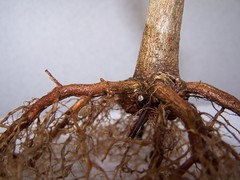Thickening the Trunk
SiliconHead
11 years ago
Featured Answer
Comments (11)
Craigger7
11 years agoRelated Professionals
Canton Landscape Architects & Landscape Designers · Middle Island Landscape Architects & Landscape Designers · Severn Landscape Architects & Landscape Designers · Brookfield Landscape Contractors · Lorain Landscape Contractors · Lynn Landscape Contractors · North Plainfield Landscape Contractors · Palos Heights Landscape Contractors · Boston Decks, Patios & Outdoor Enclosures · Leander Decks, Patios & Outdoor Enclosures · New Albany Decks, Patios & Outdoor Enclosures · Palmetto Decks, Patios & Outdoor Enclosures · San Jose Decks, Patios & Outdoor Enclosures · West Palm Beach Decks, Patios & Outdoor Enclosures · Wheaton Decks, Patios & Outdoor Enclosuresryan_tree
11 years agotapla (mid-Michigan, USDA z5b-6a)
11 years agoEdymnion
11 years agoZburkett
11 years agovariegatednancy1
11 years agotapla (mid-Michigan, USDA z5b-6a)
11 years agoTony's Landscape Design
8 years agotapla (mid-Michigan, USDA z5b-6a)
8 years agoBest Bonsai
8 years ago
Related Stories

EDIBLE GARDENSWhy Grow Quince? For Beauty, Fragrance and Old-Time Flavor
Delightfully perfumed fruit and lovely spring blossoms make this apple and pear cousin worth a spot in the garden
Full StoryMore Discussions









Best Bonsai